Air conditioners with forced ventilation
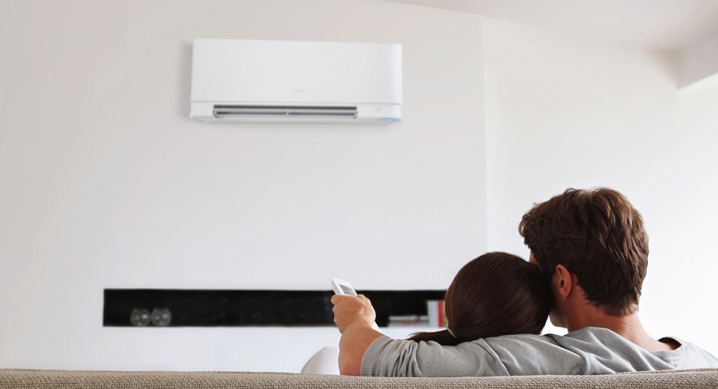
Air conditioners have long entered our life and firmly settled there. They are the salvation from the heat, which comes to us in May and sometimes lasts right until mid-September.
However, like any other technique, air conditioners also have certain disadvantages. For many years now, manufacturers have been trying to identify as many of them as possible for the sake of further elimination. So, all new, more advanced models and even whole complexes are regularly born.
As a result, we got a special type of these devices, called supply air conditioners. In this article, we will talk in detail about what they are, what advantages and disadvantages they have, as well as what subspecies exist today and what to look for when choosing.
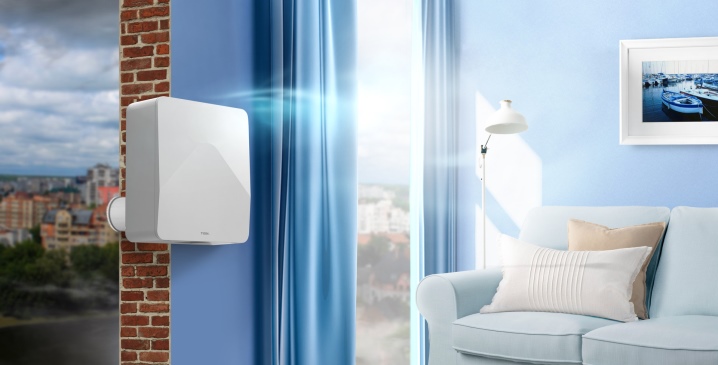
What it is?
Many apartment buildings in our country were built quite a long time ago. Their ventilation systems managed to get dirty and become unusable. In addition, today plastic windows are installed in most rooms, which also impair natural ventilation.
A conventional air conditioner cannot fix this, because it is designed to cool the air in an enclosed space. And the amount of carbon dioxide continues to grow, which can harm human health. To improve the health of the internal environment, a new type of devices was developed - an air conditioner with forced ventilation for an apartment. Let's see what is the difference between the devices.
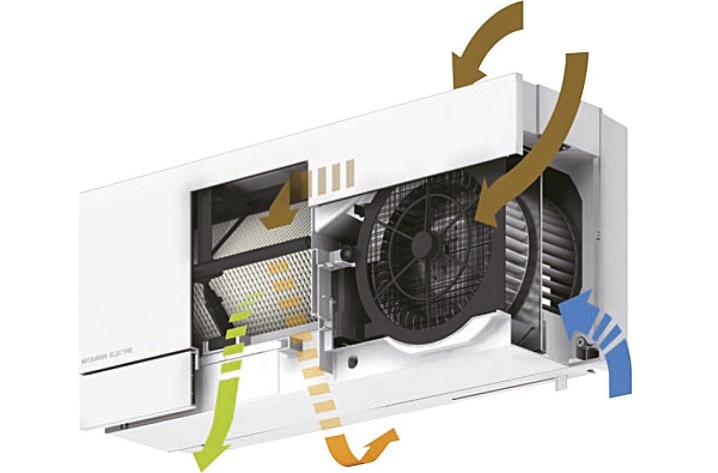
Standard models include two main elements:
- evaporating block - located within the room;
- external block - a compressor-condensing device fixed to the facade.
The first unit takes air from the room, after which the cooling process takes place by transferring thermal energy. The carrier in this case is freon, which initially has a gaseous form. After passing through the second block, it turns into liquid. To return to its original form, freon must take some of the heat from the air from the evaporating block. And the cooled air returns back to the room.

In short, the operation of the air conditioner is recirculation, that is, no air exchange takes place. According to GOST standards, at least 30 cubic meters per person per hour must be supplied to the premises. Conventional air conditioners cannot provide this, and this is their main drawback. For air to enter, you have to open the windows, which in hot weather partially neutralizes the effect of cooling technology.
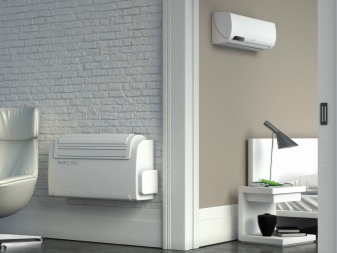
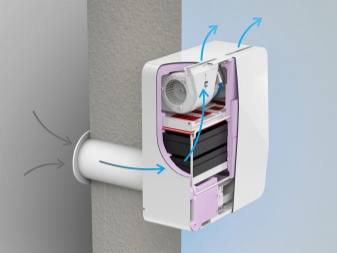
Supply air conditioners work very differently.
Principle of operation
The supply devices also include two blocks. The main elements of the first one are:
- cooler;
- filter;
- fan;
- control Panel.
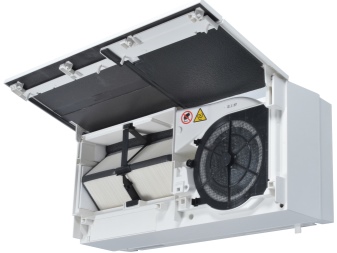
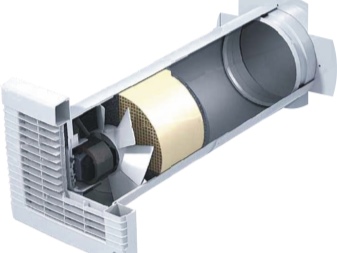
Elements of the second - remote module:
- Heat pump;
- compressor and condensing unit;
- microprocessor control.
The connector of the considered blocks is the freon pipeline. An electronic type heater is also connected to the indoor module.
Air is simultaneously drawn from both the room and the street. They enter the mixing chamber, where mixing takes place accordingly. The resulting air passes through filters and is processed according to a predetermined mode, that is, it is cooled, heated or dehumidified. Finally, he goes back into the room.Thus, the air inside is not only cooled, but also refreshed.

Many of the modern models are additionally equipped with a microprocessor control system. Thanks to her, the device automatically maintains the specified conditions in the room. For example, if in summer it cools the air, then in autumn and winter the air conditioner will heat it up. The control module can be used to adjust the set parameters. The variety of functions and settings depends on the air conditioner model.
Views
Supply air conditioners, in turn, also have several varieties.
Duct air conditioner with inflow function fresh air is the most standard of these. We described the principle of its operation above. It includes a cleaning filter that stops dust and debris from the outside. Some of the models contain special photocatalytic filters that additionally disinfect the air.
A duct air conditioner with fresh air admixture differs in that the number of indoor units can grow up to 4 pieces. This allows them to be placed in different rooms of the apartment. However, the parameters for accessing them will be the same everywhere. At the same time, the amount of street air intake is only 10%.

External air conditioner provides 30% of external air admixture. This is possible thanks to a more competent use of the supply circuit. Air enters the system through several openings at once. However, the outdoor unit is large and requires a lot of free space. Adjustment of the parameters of an air conditioner with an external air intake takes place traditionally: from the inside, using an electronic control panel.
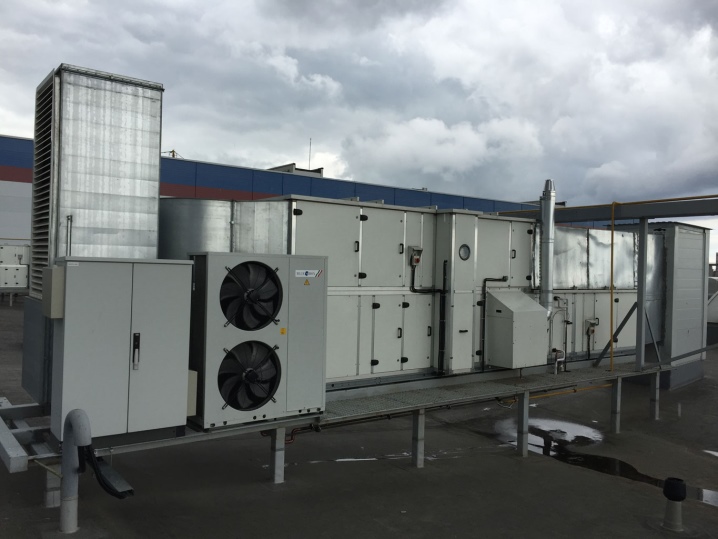
Apartment air conditioner equipped with a supply and exhaust system. This is not the most powerful variety. It delivers no more than 8 cubic meters of air per hour. But this is quite enough for one room. Also apartment air conditioners have two pipes. Through one, air is supplied from the street, through the other it is removed. At the same time, these modes cannot work, so you need to independently choose between them using the control panel.
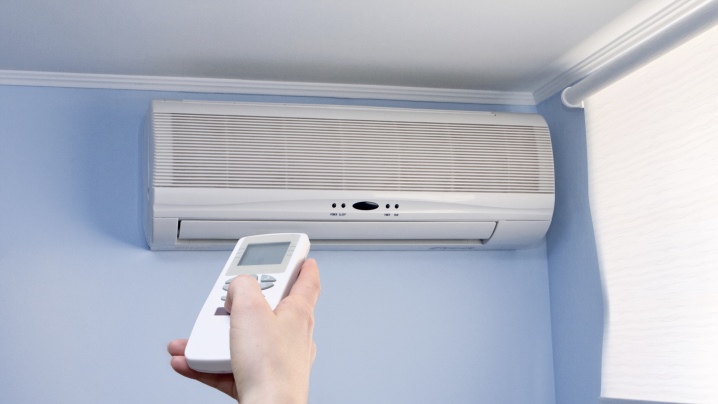
Cassette air conditioner great for rooms with a large area. There may be several indoor units, depending on the size of the room. They are located under the ceiling and provide uniform cooling and fresh air supply.
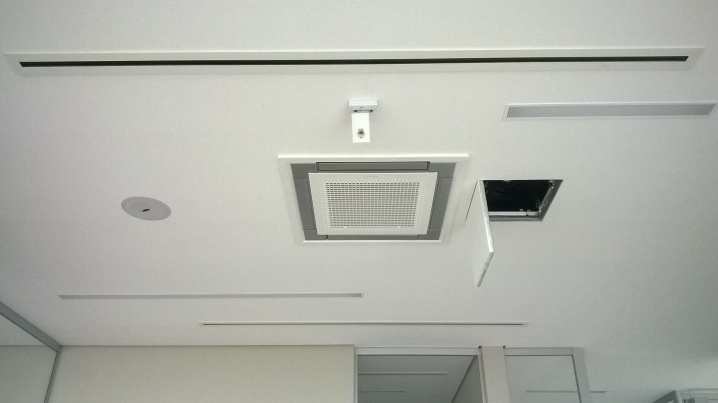
Column air conditioner also popularly called cupboard. The fact is that it has a large-sized indoor unit. It is not fixed in any way - it just sits on the floor. Inside, the unit has a structure similar to that of conventional supply air conditioners. The column type is capable of creating a powerful flow of directed air, which in a short time cools or heats, and also refreshes the air in the room.
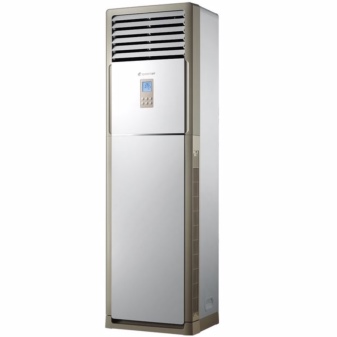
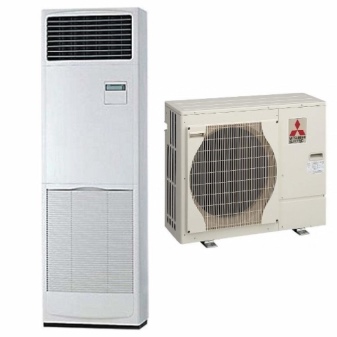
Window air conditioner represents the most compact version, since all elements are collected in one case. The device can be built not only into a window, but also into a wall. The front of the body is located inside the building, and the rear is outside.
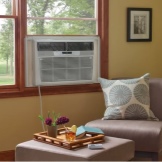
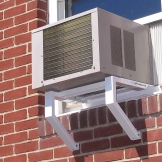
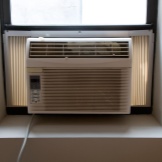
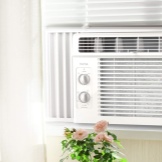
Mobile air conditioner is another compact version and is great for small apartments and offices where it is impossible to install a full-fledged unit. Both units are housed in one housing. To install such a device, it is enough to correctly assemble all the parts and bring the pipe out of the window or ventilation system.

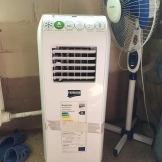
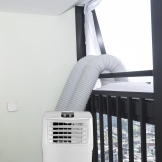
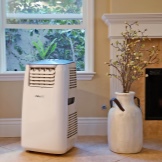
Advantages and disadvantages
As we have already found out, supply air conditioners are superior to conventional air conditioners, and their main advantage is to create a healthy atmosphere in a refrigerated room. Nevertheless, this type has several additional advantages:
- the inflow of fresh air is provided at any time of the year, regardless of the temperature regime;
- the purification function allows you to get oxygen without dust and impurities, which is very useful in large and noisy cities;
- the microprocessor automatically maintains the set temperature and humidity level in the room, and the intuitive control makes it easy to adjust these settings.
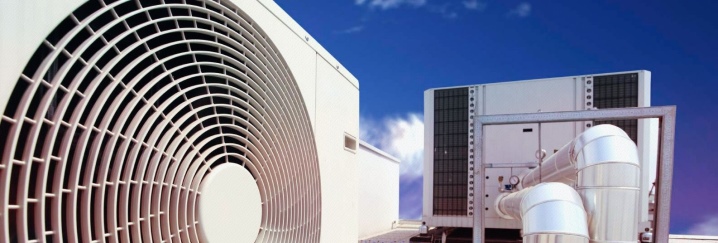
Of course, there were also some drawbacks:
- many models make too much noise due to the presence of an additional fan, so the indicators are on the verge of 30 dB, which, according to the law, cannot be exceeded at night;
- supply air conditioners are not able to completely and completely replace a full-fledged ventilation system;
- higher cost when compared to conventional air conditioners.
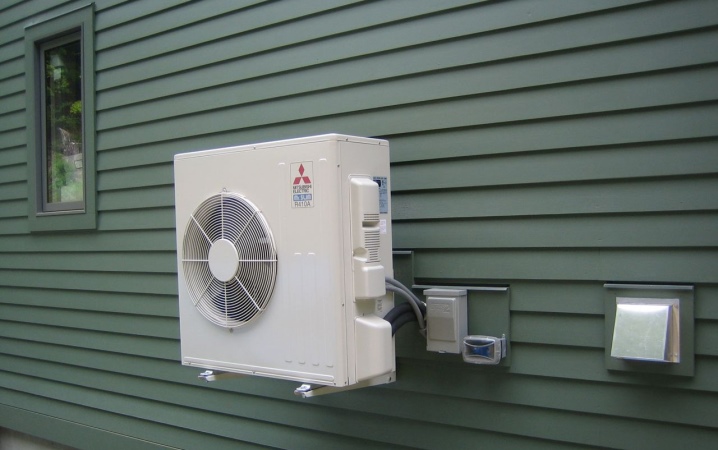
This is not to say that the listed disadvantages can be called significant. And yet they scared off many potential buyers - in our country this type of air conditioners is not very popular.
Manufacturers
If you are thinking about which air conditioner to choose from which manufacturer, pay attention to the most famous brands. Perhaps the cost of such devices will be slightly higher than those installed by not very popular companies. But you can be confident in the quality and reliability of these air conditioners. The most famous manufacturers today are:
- Hitachi - a huge conglomerate from Japan, known all over the world for its various equipment, including air conditioners;
- Daikin - another Japanese company that is a leader in the production of air conditioners;
- Mitsubishi - a manufacturer of air conditioners, which is almost not inferior to the previous company, producing one of the most modern and perfect devices;
- Haier - a Chinese company that managed to gain a foothold in the world (and in particular the Russian) market due to its average price category;
- Toshiba - and again a manufacturer from Japan, known to everyone for its high-quality household appliances, including air conditioners at competitive prices.
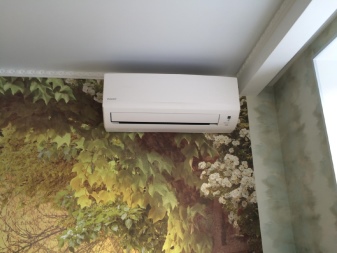
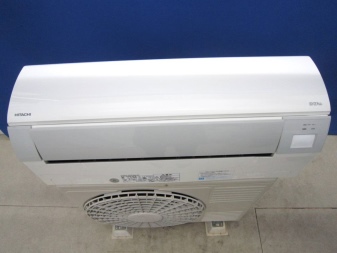
However, this does not mean that these five companies have captured the entire market. There are many more manufacturers in the world who also produce cheaper, but no less high-quality equipment. And in order not to be mistaken when buying an air conditioner, we recommend following our advice on choosing.
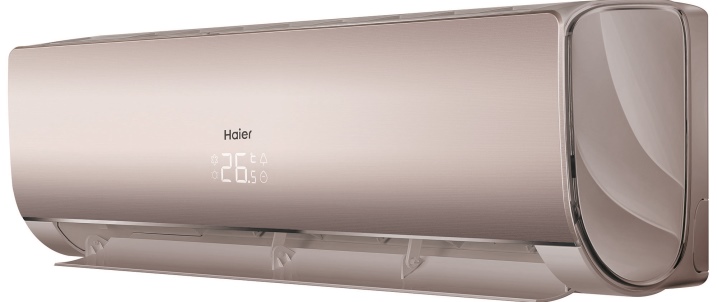
Selection Tips
First of all, it is worth assessing the conditions in the room where you are going to install the air conditioner. If the building is equipped with good ventilation, which effectively ensures air exchange, then it is not necessary to spend extra money on a supply device.
Estimate the size of the room. On high ceilings, cassette air conditioners can be placed, which will not take up free space. And with a suspended structure, you can disguise the indoor units. For low ceilings, it is better to choose models with wall or floor units. If the room has a large area, you should choose a powerful air conditioner, for example, a column-type air conditioner.
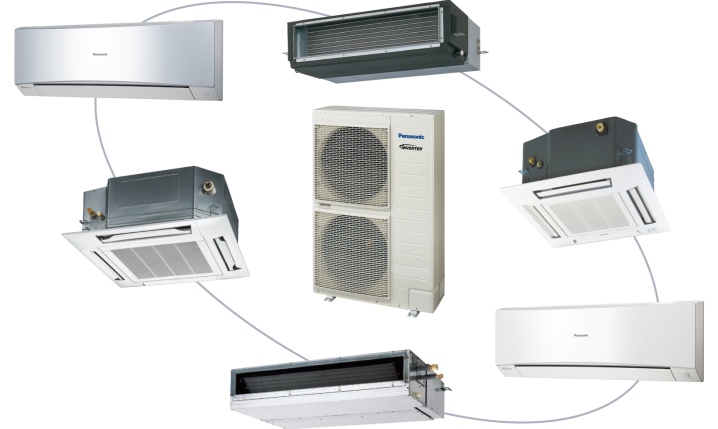
Always carefully read the technical characteristics of the air conditioners. Among them, not only the power is indicated, but also the area for which it is designed.
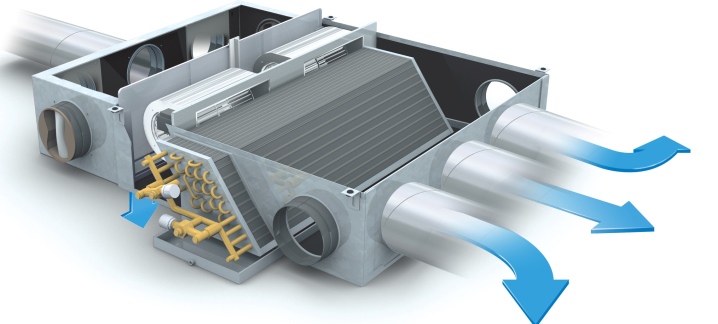
The financial issue, of course, always remains one of the most important for our compatriots. The cost of models is influenced not only by their power, but also by the availability of additional functions. Therefore, in order not to overpay, decide in advance what exactly you need, and what opportunities you can do without.
Today, air conditioners are already available in almost all offices and in many apartments. A variety of models allows you to choose a device that is suitable for both operating conditions and cost.
More details about the duct air conditioner can be found in the video below.













The comment was sent successfully.